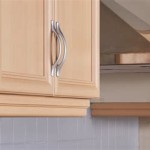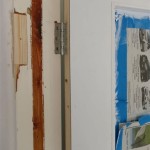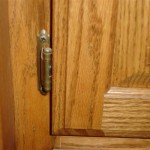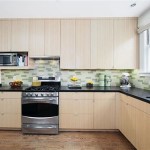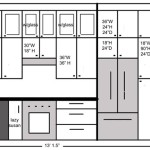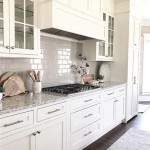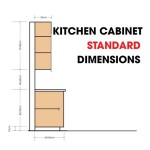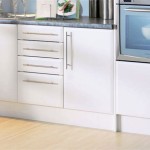Kitchen Cabinets: Furniture That Defines Your Space
Kitchen cabinets are more than just storage solutions; they are the backbone of your kitchen's design and functionality. They serve as the central hub for organizing your culinary essentials, showcasing your aesthetic preferences, and shaping the overall ambiance of the space. When selecting kitchen cabinets, numerous factors come into play, including style, material, functionality, and budget. Understanding the intricacies of these elements is crucial in making informed decisions that ensure your cabinets seamlessly integrate with your kitchen's design and meet your specific needs.
Understanding the Anatomy of a Kitchen Cabinet
Kitchen cabinets are essentially composed of three primary components: the cabinet box, the door, and the hardware. The cabinet box, typically constructed from plywood or particleboard, serves as the structural foundation for the cabinet. It houses the shelves, drawers, and other internal components. The cabinet door, available in various styles and materials, provides access to the cabinet's interior. Hardware, including hinges, pulls, and knobs, enhances the functionality and aesthetic appeal of the cabinet.
Exploring Styles and Materials
Kitchen cabinets come in a vast array of styles, each offering unique aesthetic characteristics. Some of the most popular styles include contemporary, traditional, transitional, and rustic. Contemporary cabinets typically feature clean lines, minimalist designs, and sleek finishes. Traditional cabinets embody classic elements like ornate details, decorative moldings, and warm wood tones. Transitional cabinets bridge the gap between contemporary and traditional, offering a balanced and versatile approach. Rustic cabinets exude a sense of warmth and natural charm, showcasing distressed finishes and reclaimed wood.
Beyond style, the material of your kitchen cabinets significantly impacts their durability, aesthetics, and price. Popular cabinet materials include wood, laminate, thermofoil, and painted finishes. Wood cabinets, often crafted from oak, maple, cherry, or hickory, offer a timeless elegance and natural beauty. Laminate cabinets, composed of a durable resin-coated surface, provide affordability and a wide range of color options. Thermofoil cabinets feature a vinyl coating that offers a smooth, glossy finish and resistance to scratches and moisture. Painted cabinets, available in countless colors, provide a customizable and stylish option.
Functionality and Configuration
Kitchen cabinets are designed with functionality in mind, offering a range of configurations and features to accommodate diverse storage needs. Base cabinets, the foundation of your kitchen's layout, provide ample storage for pots, pans, and appliances. Wall cabinets, mounted above countertops, optimize vertical space for dishes, glasses, and other frequently used items. Pantry cabinets, equipped with shelves and drawers, offer dedicated storage for pantry staples and dry goods. Drawer cabinets, featuring pull-out drawers, provide easy access and organization for utensils, cookware, and other items.
Beyond the basic cabinet types, there are numerous specialized features that enhance functionality. Lazy Susans, rotating shelves designed for corner cabinets, maximize storage space and accessibility. Pull-out shelves, integrated into cabinets, offer convenient access to the contents of the cabinet. Pantry drawers, featuring deep, wide drawers, provide dedicated storage for larger items like baking sheets and platters.
Budgeting and Installation
The cost of kitchen cabinets varies considerably based on factors such as style, material, size, and complexity. Custom cabinets, designed and built to your specific specifications, generally cost more than stock cabinets, which are pre-designed and readily available. While stock cabinets offer affordability, custom cabinets provide a personalized touch and precise fit for your kitchen's layout.
The installation of kitchen cabinets is also a significant cost factor. Hiring professional installers guarantees expert craftsmanship and ensures proper installation, maximizing the longevity and functionality of your cabinets. However, if you possess DIY skills and are comfortable with woodworking, installing your own cabinets can offer cost savings.
Ultimately, selecting kitchen cabinets is an investment in your home's aesthetic appeal, functionality, and overall value. By carefully considering style, material, functionality, and budget, you can choose kitchen cabinets that perfectly complement your kitchen's design and meet your unique needs.
:strip_icc()/101901077-91bd5f16fd374820a51486835e5b1761.jpg?strip=all)
Kitchens With Furniture Style Cabinets

The Difference Between Cabinet Grade Furniture Wood Cabinets

Fufu Gaga Large 6 Doors Kitchen Cabinet With Hutch And Buffet Pantry Wine Rack 70 9 In H X 47 2 W 15 D Kf020261 012 The Home Depot

6 Easy Ways To Create A Furniture Style Kitchen Design

Furniture Looks Elegant Simplicity Mark New Styles In Kitchen Cabinetry American Hardwood Information Center

Green Shaker Kitchen Cabinets Lily Ann

China Guangzhou Factory House Dining Room Cabinet Furniture Designs Modern Classic Usa Shaker Style Kitchen Cabinets Design Made In Com

64 Kitchen Cabinet Design Ideas 2024 Unique Styles
:strip_icc()/101650463-bae1f516c9674717972cf9abdf13bd3e.jpg?strip=all)
Kitchens With Furniture Style Cabinets

Dark Oak Cabinets In Kitchen Traditional Bar Cabinetry French Doors Flat Pack Furniture China Cabinet Cupboard Made Com
Related Posts

